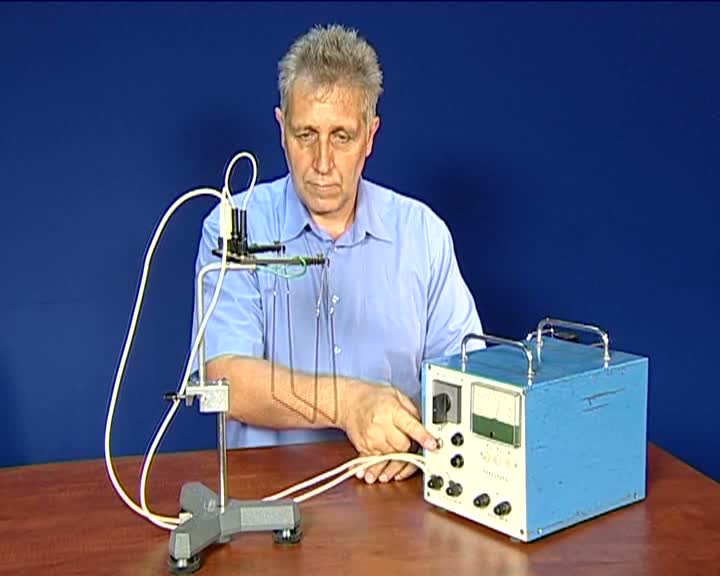„Áramvezetők közötti erőhatás váltóárammal” változatai közötti eltérés
| (egy szerkesztő 2 közbeeső változata nincs mutatva) | |||
| 6. sor: | 6. sor: | ||
A párhuzamos vezetők közötti erőhatás váltóárammal is bemutatható. Váltóáram esetén az áram iránya ide-oda változik a vezetőn belül. Mindegy, hogy jobbra vagy balra folyik az áram, az adott kapcsolásnál a pillanatnyi áramirány ellentétes a két vezetőben, tehát taszítást tapasztalunk éppúgy, mint az egyenáramú forrásnál. Ha megváltoztatjuk a kapcsolást az egyenáramú esetnél bemutatott módon, akkor vonzóerőt észlelünk, hiszen az áram minden pillanatban azonos irányú a két vezetőben. | A párhuzamos vezetők közötti erőhatás váltóárammal is bemutatható. Váltóáram esetén az áram iránya ide-oda változik a vezetőn belül. Mindegy, hogy jobbra vagy balra folyik az áram, az adott kapcsolásnál a pillanatnyi áramirány ellentétes a két vezetőben, tehát taszítást tapasztalunk éppúgy, mint az egyenáramú forrásnál. Ha megváltoztatjuk a kapcsolást az egyenáramú esetnél bemutatott módon, akkor vonzóerőt észlelünk, hiszen az áram minden pillanatban azonos irányú a két vezetőben. | ||
| − | == | + | == Force effect between conductors with alternating current == |
| − | The force effect between the wires can also be demonstrated with AC current. In this case the direction of the current is alternating. However, | + | The force effect between the wires can also be demonstrated with AC current. In this case, the direction of the current is alternating back and forth. However, independant of the given arrangement, the momentary direction of the current is opposite in the two conductors, and repulsion is detected. By changing the connection of the wires, attraction is detected, since the momentary direction of the current is identical in the two wires. |
</wikitex> | </wikitex> | ||
A lap jelenlegi, 2013. július 1., 12:36-kori változata
Az elhangzó szöveg
A párhuzamos vezetők közötti erőhatás váltóárammal is bemutatható. Váltóáram esetén az áram iránya ide-oda változik a vezetőn belül. Mindegy, hogy jobbra vagy balra folyik az áram, az adott kapcsolásnál a pillanatnyi áramirány ellentétes a két vezetőben, tehát taszítást tapasztalunk éppúgy, mint az egyenáramú forrásnál. Ha megváltoztatjuk a kapcsolást az egyenáramú esetnél bemutatott módon, akkor vonzóerőt észlelünk, hiszen az áram minden pillanatban azonos irányú a két vezetőben.
Force effect between conductors with alternating current
The force effect between the wires can also be demonstrated with AC current. In this case, the direction of the current is alternating back and forth. However, independant of the given arrangement, the momentary direction of the current is opposite in the two conductors, and repulsion is detected. By changing the connection of the wires, attraction is detected, since the momentary direction of the current is identical in the two wires.
